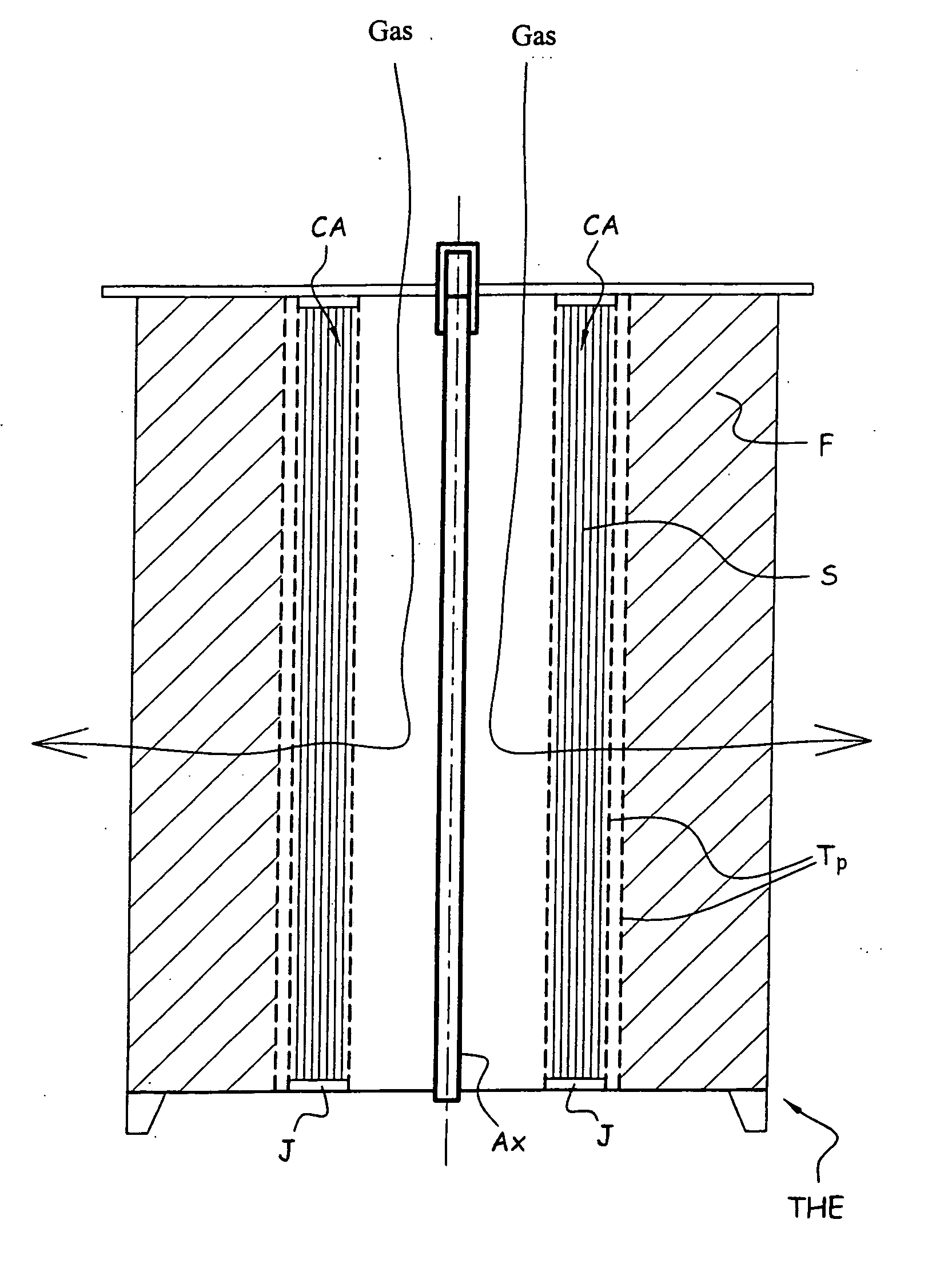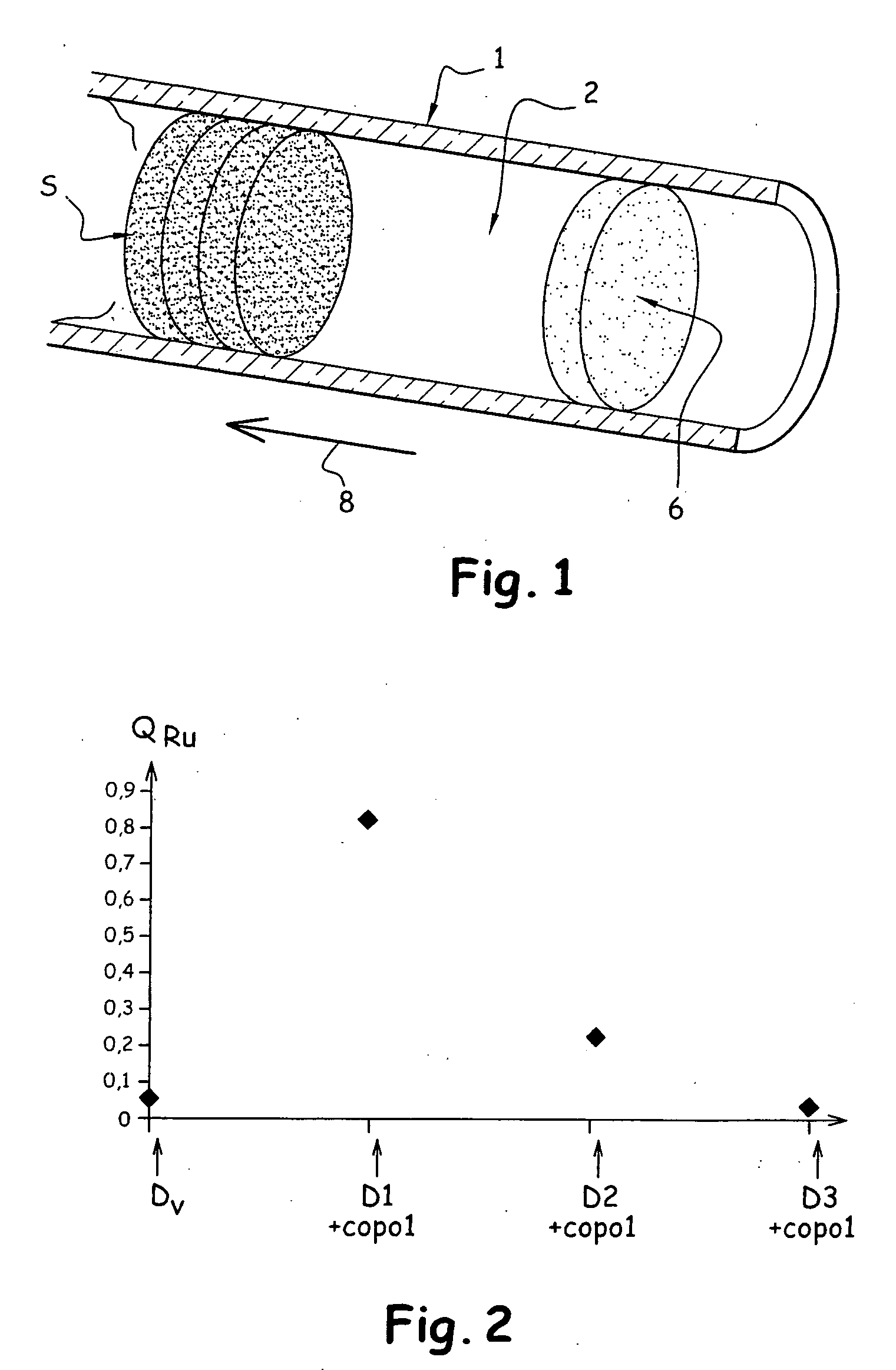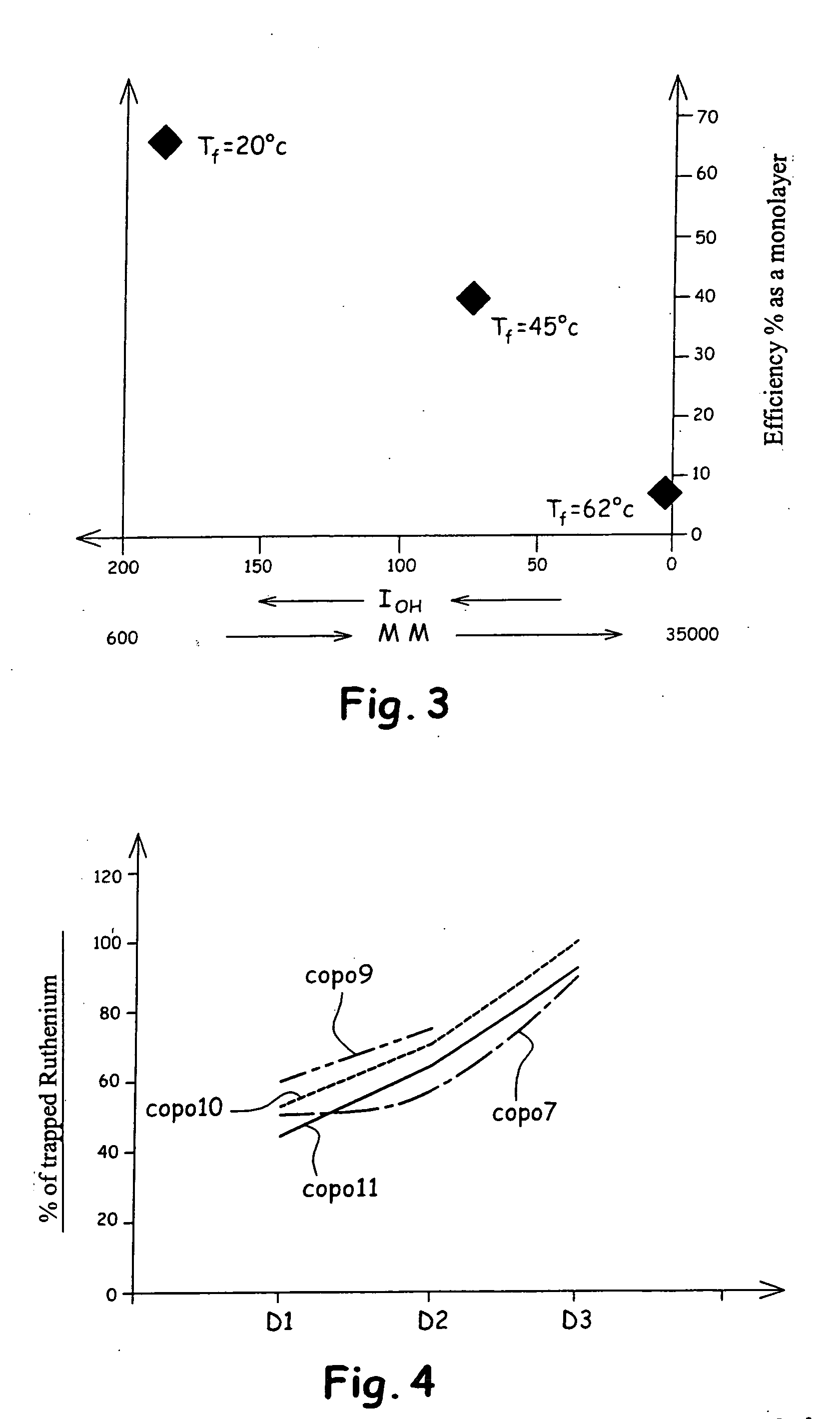Method and device for capturing ruthenium present in a gaseous effluent
- Summary
- Abstract
- Description
- Claims
- Application Information
AI Technical Summary
Benefits of technology
Problems solved by technology
Method used
Image
Examples
example 1
Example of polymers and copolymers that can be used according to the present invention
[0062] Grouped together in Table 1 below are various polymers, copolymers and blends that can be used in the present invention.
[0063] They are commercially available, for example from:
[0064] Lambert Rivière (manufacturer: ICI);
[0065] Albright & Wilson;
[0066] Roth Sochiel.
TABLE 1Melting pointNameMeaning(° C.)PEGPolyethylene glycol—300 toPolyethylene glycols having—35 000 PEGmolecular weights rangingfrom 300 to 35 000 g / molCopol 1Polyethyleneglycol / polypropylene glycolblock copolymerCopol 2Ethylene glycol / propylene27glycol / butylene glycolcopolymerCopol 7PEG 2000 + PEG 300 in25proportions of 50 / 50 byweightCopol 9PEG 2000 + PEG 300 + Copol 134in proportions of 70 / 20 / 10 byweightCopol 10PEG 2000 + PEG 300 + Copol 123in proportions of 45 / 45 / 10 byweightCopol 11PEG 2000 + Copol 2 in38proportions of 50 / 50 byweightCopol 14Copolymer based on ethylene37glycol, propylene glycol andbutylene glycol
example 2
Example of ruthenium trapping by a copolymer according to the present invention
[0067] Stainless steel wool (fibre diameter (Ø): 12 μm), called WB12 (trade name), specimens, as substrates, were impregnated with a 5 wt % solution of a copolymer according to the present invention. The copolymer of the present invention, used here, which has surfactant properties, is a PEG / PPG (polyethylene glycol / polypropylene glycol) copolymer, which is liquid at room temperature, denoted in the above Table 1 by Copol 1. It comes from Albright and Wilson, with the trade name AMPLICAN.
[0068] The operating conditions for the trials were the following:
[0069] temperature: 18.5° C.;
[0070] relative humidity: 42%;
[0071] [O]: 1.8 mg / l;
[0072] flow rate: 2.24 m3 / h;
[0073] duration of the trial: 5 h;
[0074] 1 unimpregnated disc+3 WB12 discs impregnated 100% with Copol 1.
[0075]FIG. 1 shows a test bed (1) used for this example. It consists of a glass tube (2) in which the three WB12 discs (S) 100% impregna...
example 3
Effect of increasing the melting point of the polymer or copolymer according to the invention
[0079] To study the impact of a change in melting point of the polymer on its efficiency, the inventors worked on a series of polymers of the same family, for which only the molecular weight and the hydroxyl number varied.
[0080] These polymers were polyethylene glycols (PEGS) whose characteristics are given in Table 3 below:
TABLE 3MeltingState at roomMolecular weightpointHydroxyltemperature(g / mol)(° C.)number IOHPEG 600Liquid 60015-25° C.178-197PEG 1500Solid 150042-48° C.70-80PEG 35 000Solid35 00060-65° C.3-4
[0081] The graph in FIG. 3 shows the trapping efficiency at room temperature of a layer of WB12 substrate impregnated with polymer at a level of about 100% by weight (polymer mass=stainless steel mass).
[0082] The capture efficiency greatly decreases with an increase in molecular weight (MW) and with a reduction in hydroxyl number (IOH). These two properties vary inversely with ea...
PUM
| Property | Measurement | Unit |
|---|---|---|
| Length | aaaaa | aaaaa |
Abstract
Description
Claims
Application Information
 Login to View More
Login to View More - R&D
- Intellectual Property
- Life Sciences
- Materials
- Tech Scout
- Unparalleled Data Quality
- Higher Quality Content
- 60% Fewer Hallucinations
Browse by: Latest US Patents, China's latest patents, Technical Efficacy Thesaurus, Application Domain, Technology Topic, Popular Technical Reports.
© 2025 PatSnap. All rights reserved.Legal|Privacy policy|Modern Slavery Act Transparency Statement|Sitemap|About US| Contact US: help@patsnap.com



